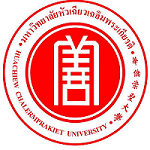Please use this identifier to cite or link to this item:
https://has.hcu.ac.th/jspui/handle/123456789/4854Full metadata record
| DC Field | Value | Language |
|---|---|---|
| dc.contributor.author | Kittipong Phumpuang | - |
| dc.contributor.author | Patcharin Buranakorn | - |
| dc.contributor.author | กิตติพงษ์ พุ่มพวง | - |
| dc.contributor.author | พัชรินทร์ บูรณะกร | - |
| dc.contributor.other | Naresuan University. Faculty of Education | en |
| dc.contributor.other | Huachiew Chalermprakiet University. Faculty of Liberal Arts | en |
| dc.date.accessioned | 2025-11-25T05:42:09Z | - |
| dc.date.available | 2025-11-25T05:42:09Z | - |
| dc.date.issued | 2018 | - |
| dc.identifier.uri | https://has.hcu.ac.th/jspui/handle/123456789/4854 | - |
| dc.description | The Asian Conference on Education 2018 ACE2018 Official Conference Proceedings, “Surviving & Thriving, Saturday, October 13th-Monday, October 15th, 2018, Toshi Center Hotel, Tokyo, Japan. | en |
| dc.description | Published by The International Academic Forum (IAFOR) in association with the IAFOR Research Centre at Osaka University | en |
| dc.description | สามารถเข้าถึงบทความฉบับเต็ม (Full Text) ได้ที่ : https://papers.iafor.org/wp-content/uploads/papers/ace2018/ACE2018_43062.pdf?t=8 | en |
| dc.description.abstract | This qualitative research aimed to creating efficient multimedia for learning values of Thai literature and producing it as an innovative media. Processes of developing the required media resulted from discussions of five scholars analyzing and sorting out effective ways of making the multimedia. Findings of the research were concluded as these: 1) contents of the media focus on stories and values of the literature; and 2) storyboards showed clear details of the contents and emphasized on three main values of Thai literature, including aesthetic and social aspects and the moral. Six classical Thai literature selected for creating multimedia were: Niras Phukaotong; Pra Apaimanee; Lilit Talengpai; Mathana Phatha; Khunchang Khunpan; and Sam Kokh. Processes of developing the multimedia were: 1) writing scripts and drawing storyboards; 2) storyboards were checked by scholars; 3) reviewing storyboards; 4) discussion between content writers and media producers; 5) gathering of resources for media production, including drawing characters; video filming; gamers designing: animation cartoon making; graphic designing; collecting of related motion pictures, state performances, and television dramas for parts supporting; and sound making, including narrations, conversations, and prose and poetry chanting; 6) multimedia production of the six classical Thai literature; 7) reviewing of the multimedia by scholars; and 8) revising of the multimedia and the completion media as teaching materials for schools and universities. | en |
| dc.language.iso | en_US | en |
| dc.rights | The International Academic Forum (IAFOR) | en |
| dc.subject | Multimedia systems in education | en |
| dc.subject | ระบบมัลติมีเดียในการศึกษา | en |
| dc.subject | Thai literature -- Study and teaching | en |
| dc.subject | วรรณคดีไทย -- การศึกษาและการสอน | en |
| dc.subject | Thai literature -- History and criticism | en |
| dc.subject | วรรณคดีไทย -- ประวัติและวิจารณ์ | en |
| dc.subject | Multimedia communications | en |
| dc.subject | การสื่อสารแบบสื่อประสม | en |
| dc.subject | Multimedia systems -- Design | en |
| dc.subject | ระบบมัลติมีเดีย -- การออกแบบ | en |
| dc.subject | Programmed instruction | en |
| dc.subject | แบบเรียนสำเร็จรูป | en |
| dc.title | Developing and Creating Multimedia for Learning Values of Thai Literature | en |
| dc.type | Proceeding Document | en |
| Appears in Collections: | Liberal Arts - Proceeding Document | |
Files in This Item:
| File | Description | Size | Format | |
|---|---|---|---|---|
| Developing-and-Creating-Multimedia-for-Learning-Values-of-Thai-Literature.pdf | 1.34 MB | Adobe PDF | View/Open |
Items in DSpace are protected by copyright, with all rights reserved, unless otherwise indicated.
